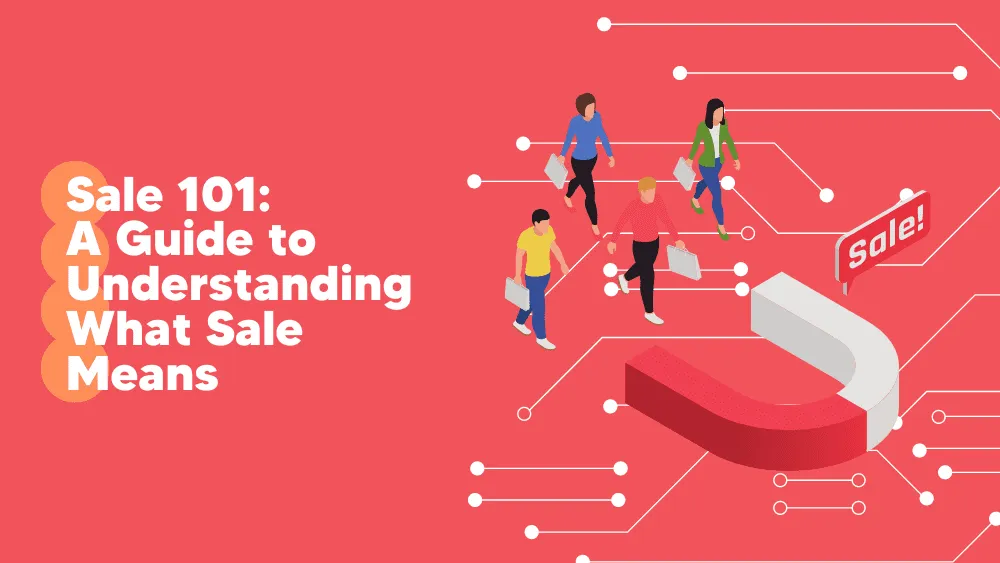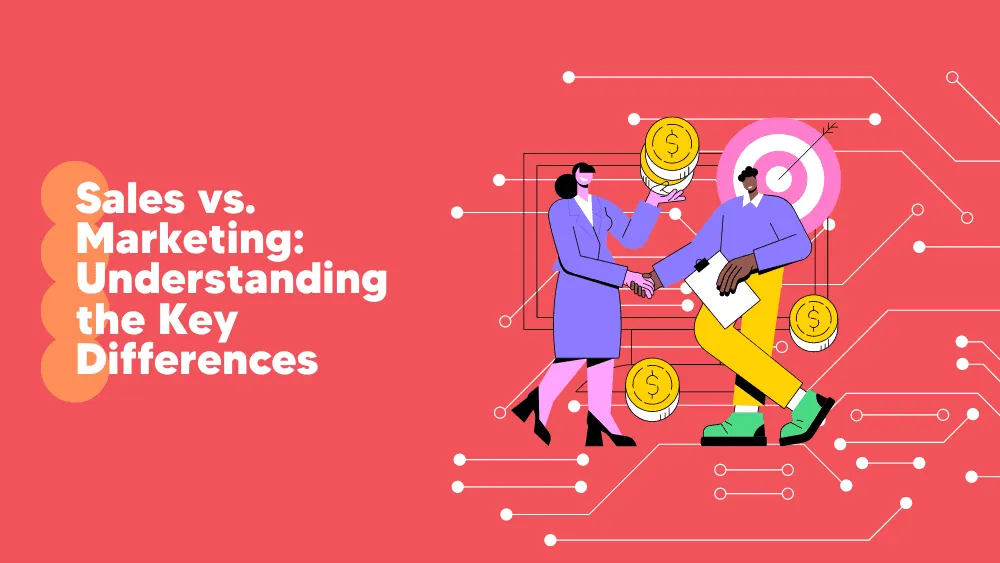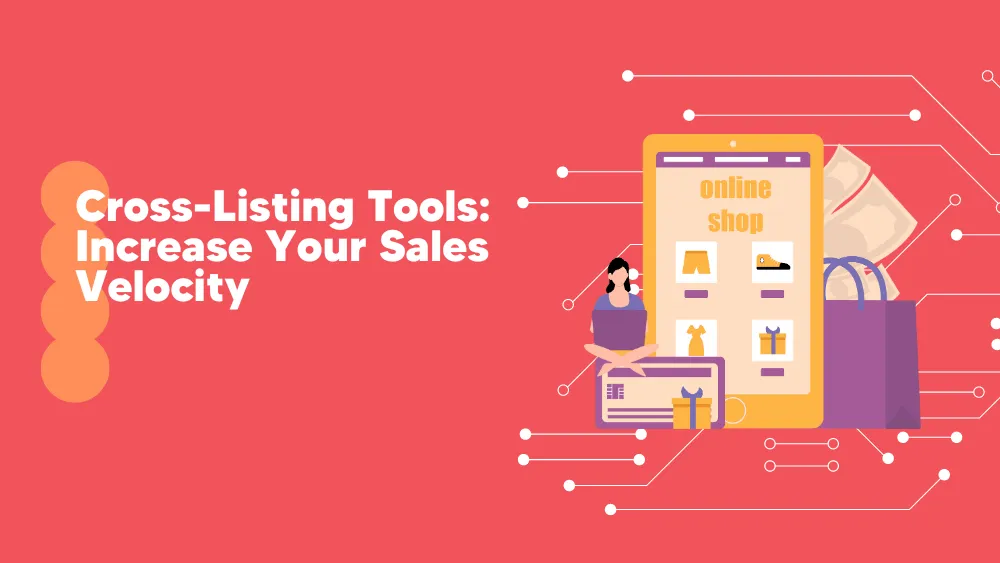Table of Contents
As you embark on your journey into commerce, you will undoubtedly come across the term “sale” on countless occasions. But what is sale? What does this oft-repeated word mean, and why is it crucial in business?
This guide will explore the chaotic yet fascinating sales world, demystifying the concept and exploring its various facets. At its most basic level, this concept refers to exchanging goods or services for a monetary sum. But its implications extend far beyond this simple definition.

What is Sale?
Sales are, in fact, the lifeblood of many companies and play a critical role in the economy. We will provide a complete overview of what sales mean, why they are essential, and how to make the most of them. From identifying a good sale to understanding common sales tactics, we will equip you with the knowledge and tools to navigate the complex and dynamic sales world.
- The buyer acquires the right to use or consume the product or service, while the seller receives compensation for their effort and investment.
Sales transactions typically involve several key steps, including product or service presentation, negotiation of terms, agreement on a price, and finalization of the transaction.
The process can vary depending on the nature of the goods or services being sold and the context in which the sale occurs.
Types of Sales
There are several different types of sales, each with unique characteristics and purposes. Here are some common types:
- Retail sales
Retail sales refer to the exchange of goods between a business and its customers. They can occur in brick-and-mortar stores or online and involve various products, from groceries to electronics.
- Wholesale sales
Wholesale sales refer to selling goods in large quantities to businesses or other organizations. This type involves lower prices per unit than retail sales, but the buyer must purchase a minimum quantity of goods.
- Direct sales
Direct sales refer to exchanging goods or services between a business and a customer without intermediaries like retailers or wholesalers. Direct sales can occur in various settings, from the old “door-to-door” sales with product or service demonstrations to online marketplaces.
- Consignment sales
Consignment sales refer to the sale of goods that a third party owns but are being sold by a retailer or other intermediary. In a consignment sale, the seller agrees to pay the third party a portion of the proceeds from the sale.
- Liquidation sales
Liquidation sales refer to selling goods at a discounted price to clear inventory or liquidate assets. Liquidation sales can occur for various reasons, from bankruptcy to business strategy changes. Understanding the different types of sales can help you navigate the complex world of commerce and make informed decisions as a buyer and seller.
The Sales Process
The process through which a product goes from prospecting to closing a deal. It consists of different stages, and understanding them is of primary importance for a salesperson to successfully sell his product.
Prospecting
The first stage of the sales cycle is prospecting. In this stage, a salesman identifies potential customers interested in the product. This can be done through various means, such as cold calling, networking events, referrals, or social media.
During this stage, the salesperson should focus on building a relationship with the prospect by understanding their needs, pain points, and preferences. This helps to create a good first impression and increases the chances of closing a deal.
Qualification Leads
Once a potential customer is identified, the next stage is to qualify the prospect. In this stage, the salesman determines whether the prospect fits the product by asking questions and analyzing their needs and budget.
Qualifying the prospect is crucial to ensure that the salesman does not waste their time and effort on uninterested prospects who cannot afford the product.
Presentation Stage
After qualifying the prospect, the salesman moves on to the presentation stage. In this stage, the salesman presents the product to the prospect and explains how it can meet their needs and solve their pain points. During the presentation, the salesperson should highlight the product’s unique features and benefits that set it apart from the competition.
The presentation should be tailored to the prospect’s needs and preferences to increase the chances of closing a deal.
Closing the Deal
The final stage of the sales cycle is closing the deal. At this point, the salesman asks for the sale by presenting the prospect with an offer and addressing any objections or concerns they might have. The salesperson should focus on creating a sense of urgency by highlighting any time-limited offers or promotions that may expire soon.
They should also be prepared to negotiate and offer flexible payment terms to meet the prospect’s budget and needs.
Following up
After closing the deal, the salesperson must be ready to build a long-term relationship with the customer by providing excellent customer service and support at all times. This can include following up with the customer to ensure their satisfaction, addressing any issues, and offering additional products or services that may interest them (we will see it in the relative chapter later).
Understanding the different sales cycle stages is essential for a salesperson to sell a product successfully. By building a relationship with the prospect, qualifying them, presenting the product, closing the deal, and providing excellent customer service, a salesperson can increase their chances of success and build a loyal customer base.
The Target Audience
Let’s talk now about who is on the other side of this process: the target audience.
When it comes to targeting customers in the sales process, it’s essential to identify and understand your target audience. This term refers to the people most likely to be interested in your product or service. To identify your target audience, you can create buyer personas and fictional representations of your ideal customers.
Consider age, gender, income, occupation, location, interests, and pain points. You can also conduct market research to gather insights into your target audience’s behavior, preferences, and attitudes.
Once you have identified your target audience, you can tailor your sales process to meet their needs and preferences.
Personalization is key!For example, if your target audience is tech-savvy millennials, you might focus on social media and mobile-friendly platforms to reach them. If your target audience is older adults, you might use more traditional marketing channels, such as print ads and direct mail.
When targeting customers in the sales process, it’s also essential to understand the so-called “customer journey,” which refers to the steps customers take from awareness to purchase. By understanding the customer journey, you can identify key touchpoints where you can engage and influence potential customers.
Targeting customers in sales involves deeply understanding your target audience and their needs, preferences, and behavior. By tailoring your sales process to meet their needs, you can increase your chances of converting leads into loyal customers.
Common Sales Tactics
What are the most used and effective tactics to generate sales? For sure, improvisation is not the best deal here! Sales tactics are an essential aspect of the sales process, and you must study and learn how to handle them to sell a product or a service.
Sales tactics involve various techniques that salespeople use to persuade potential customers to purchase their products or services.
Here are some of the most common ones companies use and how they work.
-
Scarcity
This tactic creates a sense of urgency by suggesting that a product or service is in limited supply. Salespeople may use phrases such as “limited-time offer” or “while supplies last” to create a sense of urgency and encourage customers to buy quickly.
-
Social proof
It comes with using the experiences and opinions of others to influence a potential customer’s decision-making process. Salespeople may use customer testimonials or case studies to show that their product or service has worked for others and can work for the potential customer.
-
Authority
This tactic involves using the salesperson’s or company’s perceived expertise to persuade potential customers. Salespeople may use titles or certifications to establish themselves as experts in their field or highlight the company’s experience and reputation to build trust and win the competition.
-
Reciprocity
It involves offering value to a potential customer in the hope that they will reciprocate by purchasing. Salespeople may offer a free trial or sample of their product or service to entice potential customers to buy.
Strategies to generate sales
Salespeople use specific tactics to create a sense of urgency, establish trust, and persuade potential customers to buy. These tactics are often rooted in psychology and are designed to appeal to potential customers’ emotions and desires.
For example, the scarcity tactic works by tapping into people’s fear of missing out. By suggesting that a product or service is in limited supply, salespeople create a sense of urgency that can motivate potential customers to act quickly.
Similarly, the social proof tactic works by tapping into people’s desire to fit in and be part of a group. By showing that others have succeeded with a product or service, salespeople can persuade potential customers that they should also buy.
Let’s see now some particular examples of strategies used by companies:- Upselling involves suggesting additional products or services to a customer who is already making a purchase. For example, a salesperson at a car dealership may suggest a higher trim level or additional features to a customer buying a car.
- Cross-selling: It involves suggesting related products or services to a customer who purchases. For example, a salesperson at a computer store may suggest a printer or accessories to a customer buying a computer.
- Limited-time offers: They create a sense of urgency by suggesting that a product or service is only available for a limited time. For example, a retailer may offer a discount on a product for a specific period.
- Free trials: Offering a free product or service trial to potential customers. For example, a software company may offer a free product trial to entice potential customers to buy (this is widely used nowadays, especially in the digital field).
Sales Tools
Sales tools and technologies can significantly improve the process for SaaS and software organizations. Customer relationship management (CRM) software, sales interaction platforms, email marketing tools, and social media monitoring tools are just a few examples of tools that can be deployed. CRM software is an essential sales tool that can assist teams in managing customer contacts and data, tracking deals, and forecasting revenues.
Sales platforms can streamline the process by automating email outreach, call scheduling, and follow-up reminders.
Email marketing tools may assist businesses in creating and sending tailored and targeted emails to potential customers. In contrast, social media monitoring tools can assist businesses in identifying potential leads and engaging with them on social media.
Salesforce, Hubspot, Pipedrive, and Outreach.io are among the most popular sales tools and technologies in the SaaS and software industries. Use tools and technology that connect with your strategy and business goals to maximize their benefits.
Sales and Marketing
Thick as thieves! Or two sides of the same coin. Sales and marketing are two vital components of any business and are inextricably linked. While they have distinct functions, they work together to achieve common goals. Sales sell products or services to customers, while marketing creates awareness, interest, and demand for those products or services.
Let’s briefly overview how sales and marketing are deeply related.- Marketing aims to generate leads and create awareness about a product or service, while sales aim to convert those leads into paying customers.
- Marketing lays the groundwork for sales by identifying potential customers, creating interest in the product or service, and building trust and credibility.
- Sales then close the deal, turning potential customers into paying customers (the final goal!).
Sales can significantly impact a company’s marketing strategy. Indeed, if a company’s sales team is not performing well, it can negatively affect the marketing efforts. For example, if a company’s sales team needs to meet its targets, it may indicate that the marketing messaging must resonate with the target audience.
This may prompt the marketing team to reevaluate their strategy and make changes to align with customer needs and preferences.
How is the Sales team working with the Marketing team?
On the other hand, if the sales team is performing well, it can positively impact the marketing strategy. A successful sales team can provide valuable feedback to the marketing guys about what messages and tactics work well with customers and what is not. This can help the marketing team refine its strategy and create more effective campaigns that resonate with the target audience.
Sounds easy, right? Well, it’s not. It takes a lot of effort, energy, and, of course, competencies. Therefore, it’s essential for companies to understand the relationship between sales and marketing and have a strategy that integrates both functions for maximum success.
After the Sale: Follow up, Metrics and Tools
After the sale, salespeople should always follow up with their customers to ensure they are satisfied with their purchase. This not only helps to build a strong relationship between the customer and the salesperson but also increases the likelihood of repeated or recurring business.
How to do so?
One effective way to follow up with customers is through encouraging feedback. By asking for their honest opinions about the product or service they purchased, salespeople can gain valuable insights into what their customers like and dislike and use this information to improve their offerings in the future.
This feedback can be obtained through surveys, emails, or phone calls.
Additionally, salespeople can offer incentives for future purchases to entice customers to return. This can include discounts on future purchases, gifts, or loyalty rewards programs. By providing these incentives, salespeople can show their customers that they value their business and want to continue to build long-term relationships with them.
Salespeople and the marketing team must analyze relevant data to check if the sales are doing well.
Have you ever heard of KPIs?
Sales metrics are “key performance indicators” (KPIs) that help businesses track and analyze their sales performance. These metrics provide valuable insight into how well a business generates revenue, acquires and retains customers, and improves profitability.
One of the most commonly used sales metrics is conversion rate, which refers to the percentage of leads that convert into paying customers.
A high conversion rate indicates that a business is doing a good job converting leads into customers. In contrast, a low conversion rate may suggest issues with the sales process or the quality of leads, and the organization has to take action in these regard.
Another essential sales metric is “average order value” (AOV), which refers to the average amount of money customers spend per single order. A high AOV indicates that customers purchase more expensive products or multiple items, which can help increase revenue and profitability.
A low AOV, on the other hand, may indicate that customers are not buying as much as they could be or that the business needs to improve its upselling and cross-selling strategies.
Businesses can use various tools and techniques, such as data analytics software, customer relationship management (CRM) systems, and marketing automation platforms, to track and analyze sales metrics.
These tools can help businesses collect and analyze data on customer behavior, purchase patterns, and sales performance, which can be used to identify trends and opportunities for improvement.
Impact of AI on Sales
Artificial Intelligence (AI) transforms how businesses approach sales, improving efficiency, personalization, and decision-making. AI-powered tools automate repetitive tasks like lead scoring and follow-up emails, allowing sales teams to focus on high-value activities. AI also improves customer interactions by analyzing vast amounts of data to provide tailored recommendations and insights.
A study made by McKinsey in 2023 found that:
- Companies using AI in sales saw a 50% increase in leads and appointments
- 40-60% reduction in costs associated with these activities.
- 79% of top-performing companies have integrated AI into their sales processes, highlighting its growing role in the industry.
AI helps sales teams work more efficiently and helps businesses to understand customer behavior better, predict outcomes, and personalize the sales experience.
Here are more real-world examples of how AI is being used in salesLead Scoring
AI tools like Salesforce Einstein analyze historical data to predict which leads will most likely convert. These tools use machine learning algorithms to score and prioritize leads, helping sales teams focus on high-potential prospects. For example, Salesforce uses AI to assign scores to leads, automating the process and saving time for sales reps.

Personalized Customer Outreach
AI-powered platforms like HubSpot use data-driven insights to craft personalized prospect outreach messages. This includes drafting emails, setting follow-up reminders, and suggesting optimal time to send messages. This level of personalization increases engagement and conversion rates.
Automated Sales Processes
Conversica uses AI-driven virtual assistants to handle repetitive tasks like responding to inquiries and following up on leads. These assistants engage with prospects via email or chat, allowing human sales reps to focus on more complex tasks. AI systems can handle thousands of leads simultaneously, scaling efforts beyond human capacity.

Sales Forecasting
Zoho CRM provides built-in AI-powered forecasting tools that help sales teams predict revenue based on historical data and current trends. It also offers scenario-based forecasting and real-time analytics.
Customer Behavior Analysis
AI platforms like Mixpanel focus on user analytics, helping businesses understand customer interactions, behaviors, and trends. It provides in-depth insights into how customers engage with products and services, which can inform targeted sales strategies.

AI-Powered CRM
AI is being integrated into CRM systems like Zoho CRM and HubSpot CRM, providing sales reps with recommendations on nurturing leads, cross-selling, and upselling. These AI tools process vast amounts of customer data to offer tailored recommendations, increasing the likelihood of closing deals.
Recap of the sales guide
This guide explains that the sale cycle has specific rules based on knowledge and relationships. To succeed in this job, salespeople must continuously learn and adapt to changing market conditions and customer needs.
In addition to prospecting and closing deals, they should remember the importance of following up with customers, encouraging feedback, and offering incentives for future purchases.
By implementing these strategies, salespeople can build strong relationships with their customers and establish a loyal customer base. To thrive in the competitive retail industry, salespeople should remain committed to their professional growth and consistently strive to improve their sales techniques.





